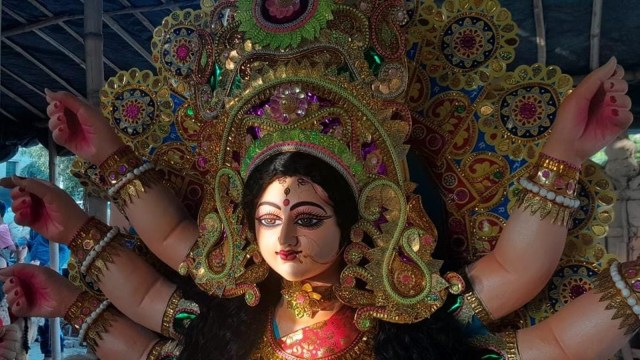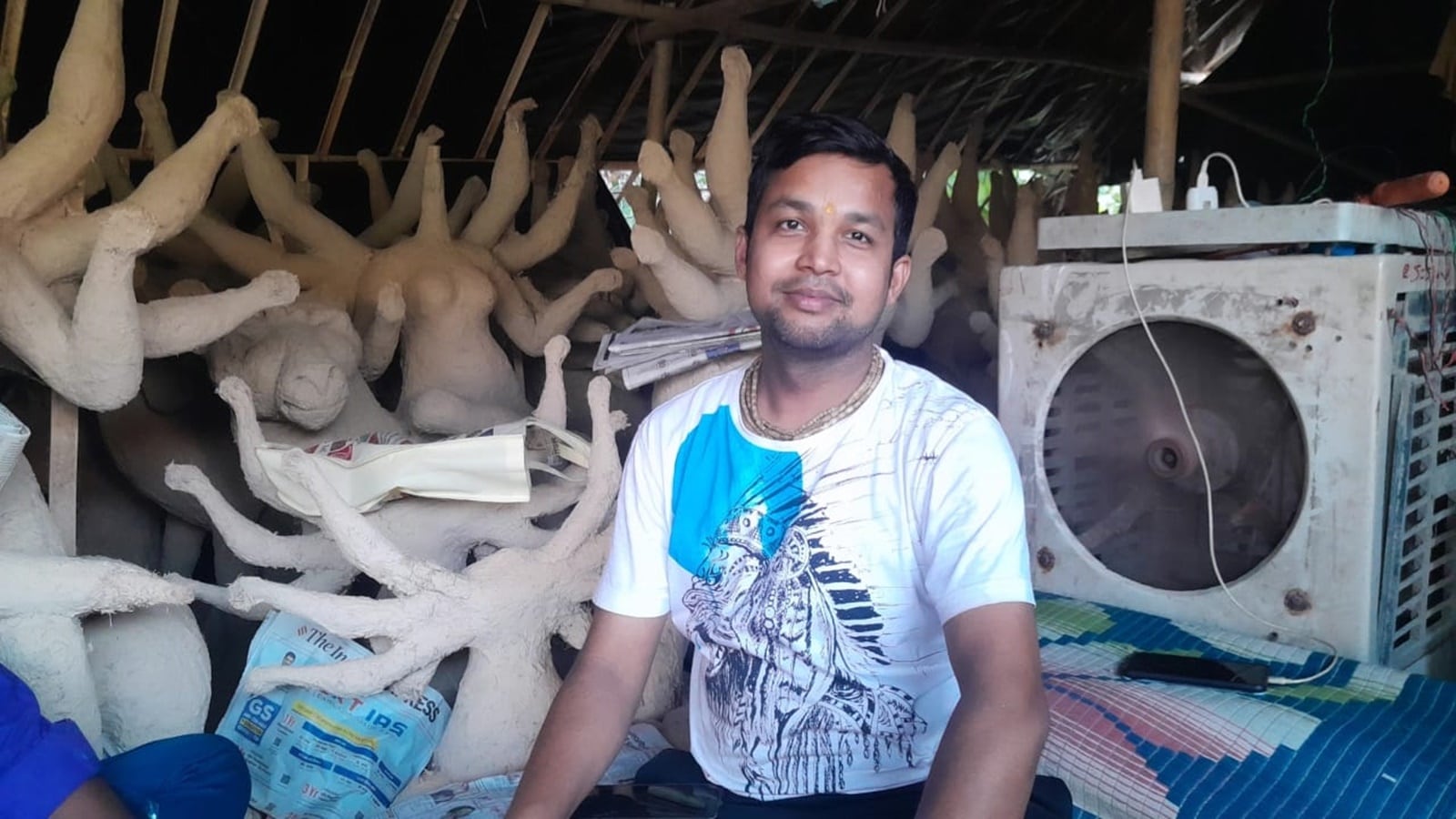📣 For more lifestyle news, click here to join our WhatsApp Channel and also follow us on Instagram
Durga Puja 2024: A peek into the making of the Goddess’ idols
“Har aurat mei Durga hai,” and this is why we try to replicate the features and figure of an actual woman while making the idol, said Biswajit Haldar, a 24-year-old idol maker.
 This year, the festival of Durga Puja will be celebrated from October 9 to 13. (Credits: Aanchal Poddar)
This year, the festival of Durga Puja will be celebrated from October 9 to 13. (Credits: Aanchal Poddar)Pujor gondho!
Raju Kumar Rai, a 45-year-old idol maker, sat under a makeshift tent painting the eyes of a “Mahishasur Mardini” idol to be delivered for Saptami — the third he completed that day. Rai moved to Delhi from West Bengal’s Malda district in 2013 in search of work and started making idols for Durga puja in 2015. Each year, he begins preparations for Durgotsav six months before the festival. This year, the festival will be celebrated from October 9 to 13.
Rai is one of the many idol makers lining the sidewalks of Delhi. “Maa ermukhe ekta gambhirjo’r thaka uchit (her face should look intense),” said a customer who arrived with his wife to buy an idol for their home. As the five-day festival approaches, the tents bustle with customers, making it difficult to find a moment to speak with the idol makers. In one corner, a kaarigar (kumar) drapes Maa Durga’s saree while another combs her hair. Truck drivers wait to load and deliver the completed idols.
 Raju Kumar Rai, a 45-year-old idol maker with his work. (Credits: Aanchal Poddar)
Raju Kumar Rai, a 45-year-old idol maker with his work. (Credits: Aanchal Poddar)
Bitul Sarkar, 38, has been making idols with his father since he was nine. After his father’s passing in 2016, he moved to Delhi from Kolkata. He noted that the idol-making process has become much more specialised today than when he began. “My father and I were the only hands involved in the process. Today, I have to employ labour for different parts of the production as demand has increased manifold,” Sarkar explained. According to him, social media has heightened the demand for more detail and design among people: “Earlier, the idols were designed according to our imagination; now, we are directed by the worshippers.”
Once Navratri concludes, Sarkar shifts to making idols of goddess Kaali, followed by goddess Saraswati for Basant Panchami in January. It is from March that Navratri’s work resumes. He earns between Rs 25,000 and Rs 30,000 each month.
Making Durga idols, however, is particularly challenging. Biswajit Haldar, a 24-year-old first-generation idol maker from Murshidabad, West Bengal, said, “It is not an easy task to make Durga idols. When we make an idol, we attempt to replicate the figure and features of an actual woman.” Haldar, who started idol-making at 10 and moved to Delhi in August at a friend’s invitation, explained, “Har aurat mei durga hai (there is Durga in every woman).”
This statement carries weight in light of a recent incident involving the rape and murder of a trainee doctor in Kolkata, the land of goddess Durga. Haldar also said that just as god created us in proper proportions, idol makers consider it their responsibility to do the same. Unable to attend the festival in Kolkata, Haldar misses the celebrations of his hometown. “In Kolkata, we have Durga idol competitions that we don’t find in Delhi. Each group presents their idols, and winners are declared. We all participate with much enthusiasm,” he said.
 Durga idols are ready to be delivered to the pandals. (Credits: Aanchal Poddar)
Durga idols are ready to be delivered to the pandals. (Credits: Aanchal Poddar)
From a wooden frame to the goddess Durga
The idol-making process begins with creating a wooden frame, which is then filled with straw, known as puwal or dhaan, using a thread or sutli. This structure is then covered with clay soil, followed by another layer of soil sourced from the Ganga or Yamuna. Baman dada, a kaarigar, sourced the Yamuna soil from Kalyanpuri in Delhi.
After allowing the structure to dry in the sun, it is covered with cloth to reduce its softness before being painted and prepared for worship. According to Rai, it takes about six to seven hours to complete a deliverable idol, though he manages to finish four to five structures in a day.
📣 For more lifestyle news, click here to join our WhatsApp Channel and also follow us on Instagram



- 01
- 02
- 03
- 04
- 05
























